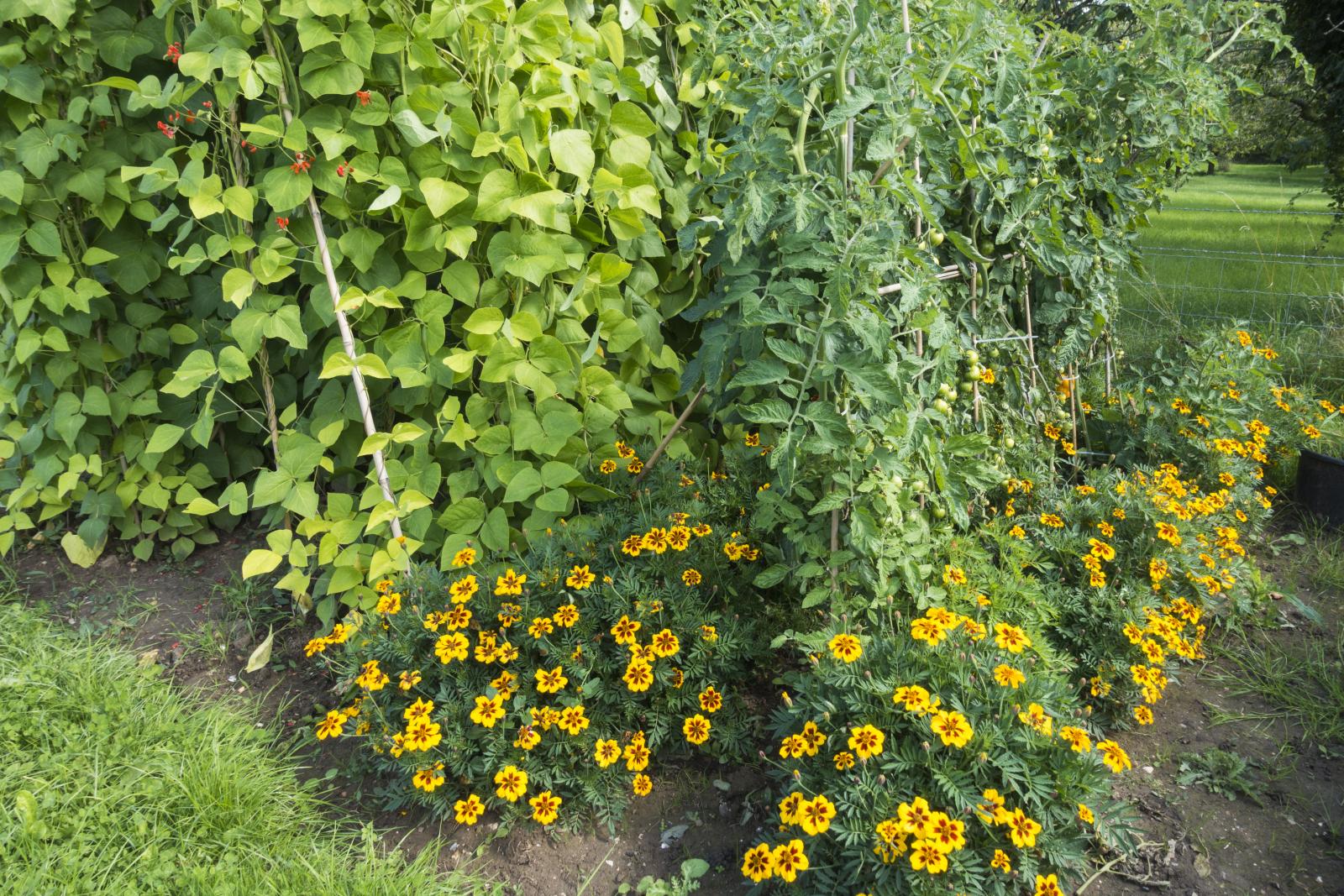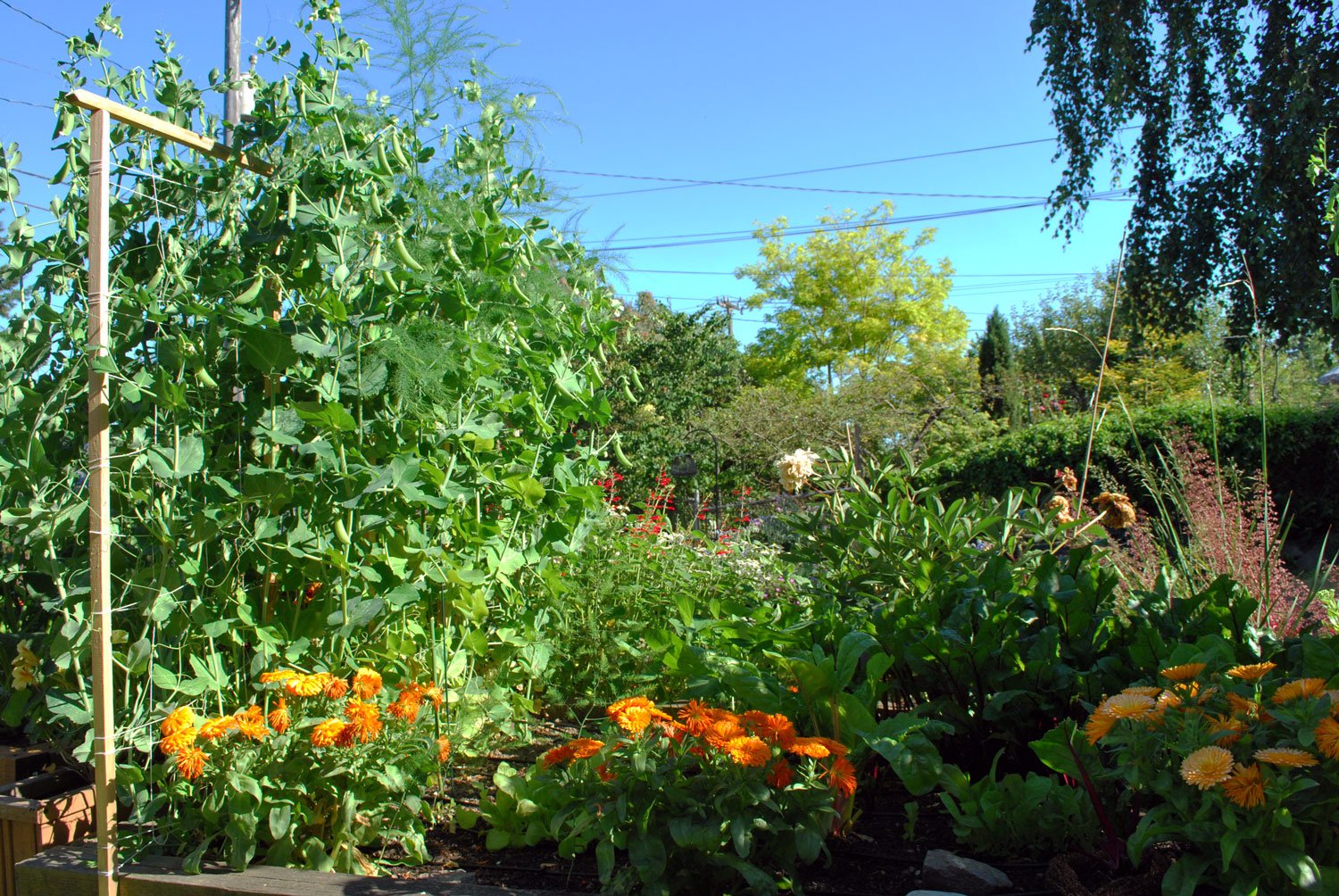Calendula: The Ultimate Companion Plant
Calendula: The Ultimate Companion Plant
Calendula (Calendula officinalis), also known as pot marigold, is a cheery annual flower that is easy to grow and has many benefits for the garden. It is a popular companion plant, meaning that it can be grown alongside other plants to help them thrive. Calendula can deter pests, attract pollinators, and improve soil health.
Benefits of Calendula as a Companion Plant
- Deters pests. Calendula has a strong scent that can repel a variety of pests, including aphids, whiteflies, beetles, and nematodes. It is especially effective against pests that are common in vegetable gardens, such as cabbageworms, carrot rust flies, and tomato hornworms.
- Attracts pollinators. Calendula is a magnet for pollinators, such as bees, butterflies, and ladybugs. These beneficial insects help to pollinate plants, which is essential for crop production. Calendula can also help to control pests by attracting predators of insect pests, such as parasitic wasps.
- Improves soil health. Calendula is a nitrogen-fixing plant, which means that it can add nitrogen to the soil. Nitrogen is an essential nutrient for plant growth. Calendula can also help to improve soil drainage and aeration.
Which Plants to Grow with Calendula
Calendula can be grown with a wide variety of plants, but some of its best companions include:
- Carrots. Calendula can help to repel carrot root fly, a common pest of carrots.
- Cucumbers. Calendula can help to deter cucumber beetles, another common pest of cucumbers.
- Potatoes. Calendula can help to repel potato beetles and nematodes.
- Tomatoes. Calendula can help to repel tomato hornworms and nematodes.
- Peas. Calendula can help to improve the yield of peas.
- Asparagus. Calendula can help to improve the flavor of asparagus.
- Roses. Calendula can help to repel aphids and other pests from roses.
- Herbs. Calendula can be grown with a variety of herbs, such as thyme, rosemary, and lavender.
How to Plant Calendula
Calendula is easy to plant and care for. It prefers full sun and well-drained soil. Sow seeds directly in the garden 2-4 weeks before the last frost. Space seeds 6-12 inches apart. Calendula does not require much fertilizer, but you can fertilize it lightly with a balanced fertilizer once a month during the growing season. Calendula flowers will bloom for several months, from early summer to late fall.
Harvesting Calendula
Calendula flowers can be harvested when they are fully open. To harvest, simply snip off the flowers with a pair of scissors. Calendula flowers can be used fresh or dried. To dry calendula flowers, hang them upside down in a dark, dry place.
Using Calendula
Calendula flowers have many medicinal and culinary uses. They can be used to make teas, salves, and tinctures. Calendula flowers are also edible and can be added to salads, soups, and other dishes.
Conclusion
Calendula is a versatile and beneficial plant that can be used in a variety of ways. It is a great companion plant for vegetables and herbs, and it has many medicinal and culinary uses. If you are looking for a low-maintenance, easy-to-grow plant that can benefit your garden in many ways, then calendula is a great choice.
Calendula, also known as pot marigold, is a beautiful and versatile flower that can be used in both ornamental and medicinal ways. But did you know that calendula is also a great companion plant? That's right, planting calendula near other plants can help to attract beneficial insects, repel pests, and improve soil health.
Here are just a few of the benefits of using calendula as a companion plant:
- Attracts beneficial insects: Calendula is a magnet for beneficial insects, such as ladybugs, lacewings, and hoverflies. These insects prey on pests, such as aphids, spider mites, and whiteflies, which can damage your plants.
- Repels pests: Calendula also has a scent that can repel some pests, such as nematodes, snails, and slugs.
- Improves soil health: Calendula is a good source of nitrogen, which can help to improve the fertility of your soil. It also helps to suppress weeds and improve drainage.
If you're looking for a way to improve the health and productivity of your garden, consider planting calendula as a companion plant. For more information, visit Gardenia Inspiration.
FAQ of calendula as a companion plant
- What are the benefits of companion planting with calendula?
Calendula is a great companion plant for many vegetables and herbs. It can help to deter pests, attract beneficial insects, and improve soil health. For example, calendula can help to repel aphids, spider mites, and whiteflies from tomatoes, cucumbers, and other crops. It can also attract pollinators such as bees and butterflies, which can help to improve fruit and vegetable production. Additionally, calendula's roots release substances that can suppress the growth of certain weeds.
- What are some good companion plants for calendula?
Some good companion plants for calendula include:
- Asparagus: Calendula can help to repel asparagus beetles from asparagus plants.
- Beans: Calendula can help to attract beneficial insects that prey on bean pests.
- Broccoli: Calendula can help to deter cabbage moths from broccoli plants.
- Brussel sprouts: Calendula can help to repel cabbage loopers from brussel sprout plants.
- Carrots: Calendula can help to improve the flavor of carrots.
- Cucumbers: Calendula can help to repel cucumber beetles from cucumber plants.
- Potatoes: Calendula can help to deter potato beetles from potato plants.
- Pumpkins: Calendula can help to attract pollinators that pollinate pumpkin flowers.
- Tomatoes: Calendula can help to repel tomato hornworms from tomato plants.
- How far apart should calendula plants be planted?
Calendula plants should be spaced about 6-12 inches apart. This will give them enough room to grow and spread.
- When should calendula be planted?
Calendula can be planted in the spring or fall. It is a hardy plant that can tolerate a variety of temperatures. However, it prefers full sun and well-drained soil.
- How do I care for calendula plants?
Calendula plants are relatively easy to care for. They need regular watering, especially during hot, dry weather. They should also be fertilized every few weeks with a balanced fertilizer. Calendula plants will bloom for several months if they are deadheaded regularly.
Image of calendula as a companion plant
Here are 5 images of calendula as a companion plant from Pinterest:
- Calendula and tomatoes. Calendula is a good companion plant for tomatoes because it helps to deter pests, such as aphids and whiteflies. It also attracts beneficial insects, such as ladybugs and hoverflies, which help to control pests.

- Calendula and cucumbers. Calendula is another good companion plant for cucumbers. It helps to repel cucumber beetles and other pests. It also helps to improve the soil quality, which can benefit the cucumbers.

- Calendula and beans. Calendula is a good companion plant for beans because it helps to improve the nitrogen levels in the soil. Beans are nitrogen-fixing plants, but they can deplete the soil of nitrogen. Calendula helps to replenish the nitrogen levels, which can benefit the beans.

- Calendula and asparagus. Calendula is a good companion plant for asparagus because it helps to deter asparagus beetles. Asparagus beetles are a common pest of asparagus, but calendula helps to repel them.

- Calendula and carrots. Calendula is a good companion plant for carrots because it helps to deter carrot fly. Carrot fly is a common pest of carrots, but calendula helps to repel them.

Post a Comment for "Calendula: The Ultimate Companion Plant"